Valves Used in Numerous Industries
The Many Places You’ll Find Valves
Anywhere that a fluid or gas flows through a pipe, you’ll find valves. They regulate flow, stop it, and start it again. Safety and relief valves protect property and lives from over pressurization.
CPV Manufacturing’s high-quality valves are used in some of the toughest industries and harshest environments on Earth. Here are a few of the places you might find them:
Marine & Shipbuilding
Ships are complex. From fuel distribution and storage to cargo loading and unloading, the ballast and bilge systems, refrigeration, and hydraulic systems, there’s no shortage of valves on a ship. You’ll find all types, from metal-seated ball and butterfly valves to relief, check, gate, and globe valves.
Large ships havecomplex systems of pipes and valves to direct the fuel. US Navy aircraft carriers use CPV valves in the lifting of aircraft to the flight deck and in bringing the jets to an abrupt halt when they land.
Marine settings are some of the most hostile…even fresh water is damaging to pipe and valve systems. Plain water causes oxidation to susceptible materials. In seawater, oxidation is compounded not only by the effects of salt, but the sand and mud, plant particles, microorganisms, and small animals. Certain bacteria can produce hydrogen sulfide, ahighly corrosive toxic gas. Valves used in naval settings have to be able to stand up to the inhospitable aquatic environment.
Oil and Gas
Oil and gas production requires heavy-duty valves and pipes. From offshore oilrigs to onshore processing and distribution, a multitude of valves will be found along the way.
Offshore rigs and facilities
Offshore oil rigs have several different functions, each requiring pipe and valve systems of their own. Piping the oil or gas from the land beneath the water requires valves and equipment that can work under as much as 10,000 feet of water.
The Christmas tree valve assemblies that can be seen on top of wellheads are a combination of valves including gate valves and chokes. Their primary function is to control the flow out of the well. Christmas trees are made to handle up to 10,000 psi of pressure and can be found both on land and in offshore wells.
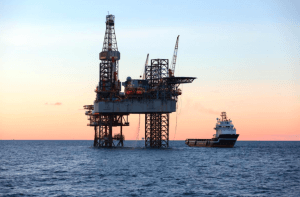 Once the oil has been extracted, typically the water will be removed from the hydrocarbons, and natural gas liquids will be separated from the fluid stream. Sometimes sour gas, raw petroleum containing hydrogen sulfide, is present. Due to its highly corrosive, flammable, and toxic nature, special handling is required including the use of corrosion-resistant valve materials.
Once the oil has been extracted, typically the water will be removed from the hydrocarbons, and natural gas liquids will be separated from the fluid stream. Sometimes sour gas, raw petroleum containing hydrogen sulfide, is present. Due to its highly corrosive, flammable, and toxic nature, special handling is required including the use of corrosion-resistant valve materials.
The valve that you’ll see the most on an oil rig is the ball valve, although other types of valves are also used.
The American Petroleum Institute (API) as well as the American Society of Mechanical Engineers and NACE (formerly the National Association of Corrosion Engineers) have standards and recommended practices that are to be followed depending on the circumstances. Specifications that may apply on an oil rig are: NACE MR0175, API 594, API 600, API 602, API 608, and API 609, API 6D, API 6A.
Pipelines
The underground pipelines that transport petroleum have valves spaced at intervals, specified by codes and laws, for their entire length. If there were to be a leak, these emergency shutoff valves would be closed, minimizing potential hazards, loss, and environmental damage. Shutoff valves also allow for maintenance to be performed.
Underground pipelines also have stations where they come above ground to allow for cleaning or inspection. The valves at these stations must be able to be fully opened so that the cleaning and inspection equipment can be fit through. Gate or ball valves are typically used at these stations.
Pumping stations containing gate, ball, and check valves are located along the length of the pipeline in order to keep the fluid moving.
The American Petroleum Institute specifications API 6D apply specifically to pipeline valves.
Refinery and petrochemical
If you’d like to see an example of almost every type of valve, a large refinery is the place to be. High temperatures and corrosive fluids are common in refineries. Such valves require extra resistance, which can be accomplished with the use of thicker walls and the right materials using metals ranging from carbon steel to high-nickel alloys.
Specifications API 594, API 600, and API 608 may apply to the valves used in a refinery.
Liquefied Natural Gas
Liquefied natural gas is about 600 times smaller in volume than in its gaseous state. Achieving this liquid state requires that it reach a temperature of -265 degrees F. The pipes and valves used in this process are large, so they must handle high pressure as well as the very low temperatures needed for liquefaction. Popular valve types in LNG production are quarter-turn ball and butterfly valves.
No valve packing materials, however, can withstand such low cryogenic temperatures. To work around this factor, a gas column is used. This column keeps the packing away from the cryogenic conditions so that it doesn’t freeze which would immobilize it.
Gas Separation
Like LNG, gas separation also occurs at very low temperatures. The valves used for gas separation must be tolerant of very low temperatures.
As in LNG production, a gas column is used to separate the packing from the low-temperatures needed for gas separation.
Chemical
The 316/316L grade of austenitic stainless steel is the metal of choice where corrosion is of moderate consideration. Production of highly corrosive chemicals requires the use of even more heavy-duty metals and alloys.
Chemical production is usually done at lower pressures than in the industries discussed above, so pressure is less of a factor than it is with others.
Linear valves are still used for some chemical processes, but the resilient-seated ball valve is popular for many chemical applications due to its zero-leakage shutoff and compact size. Diaphragm, pinch valves, gate and globe valves are used as well.
This is just a sampling of all the places valves are used. Even if you’re not directly involved in one of the industries we serve, there’s a pretty good chance that your daily life has been touched in some way by a CPV valve.
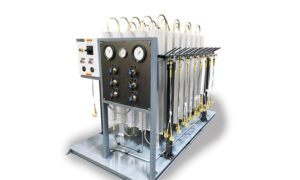

 Once the oil has been extracted, typically the water will be removed from the hydrocarbons, and natural gas liquids will be separated from the fluid stream. Sometimes sour gas, raw petroleum containing hydrogen sulfide, is present. Due to its highly corrosive, flammable, and toxic nature, special handling is required including the use of corrosion-resistant valve materials.
Once the oil has been extracted, typically the water will be removed from the hydrocarbons, and natural gas liquids will be separated from the fluid stream. Sometimes sour gas, raw petroleum containing hydrogen sulfide, is present. Due to its highly corrosive, flammable, and toxic nature, special handling is required including the use of corrosion-resistant valve materials.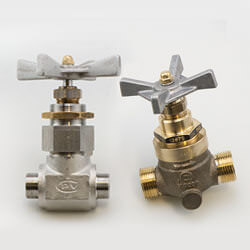
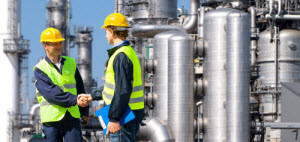 Many choose quarter-turn ball valves for valve type in cryogenic service because of their tight shut-off capabilities. For larger valves, gate valves are utilized over ball valves.
Many choose quarter-turn ball valves for valve type in cryogenic service because of their tight shut-off capabilities. For larger valves, gate valves are utilized over ball valves.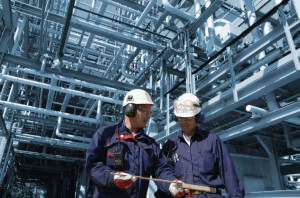 Within the cryogenic distribution industry, safety is at the forefront of importance. This means, new innovations are constantly being considered to make the industry as safe as possible. In addition to safety, improving operational efficiencies is also a critical part of the industry. There’s a lot of pressure to reduce the cost operational efficiency because of this competitive market.
Within the cryogenic distribution industry, safety is at the forefront of importance. This means, new innovations are constantly being considered to make the industry as safe as possible. In addition to safety, improving operational efficiencies is also a critical part of the industry. There’s a lot of pressure to reduce the cost operational efficiency because of this competitive market.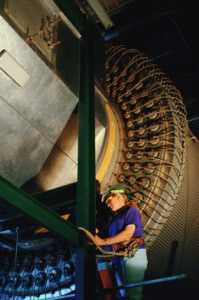 Of the world’s total gas reserves, the Middle East (mainly Qatar and Iran) provides 43%. However, just because the Middle East has vast resources doesn’t mean it doesn’t rely on imports for its energy. The
Of the world’s total gas reserves, the Middle East (mainly Qatar and Iran) provides 43%. However, just because the Middle East has vast resources doesn’t mean it doesn’t rely on imports for its energy. The  Cryogenic valves are used in storage, processing, and distribution and demonstrate the growth of LNG. The
Cryogenic valves are used in storage, processing, and distribution and demonstrate the growth of LNG. The